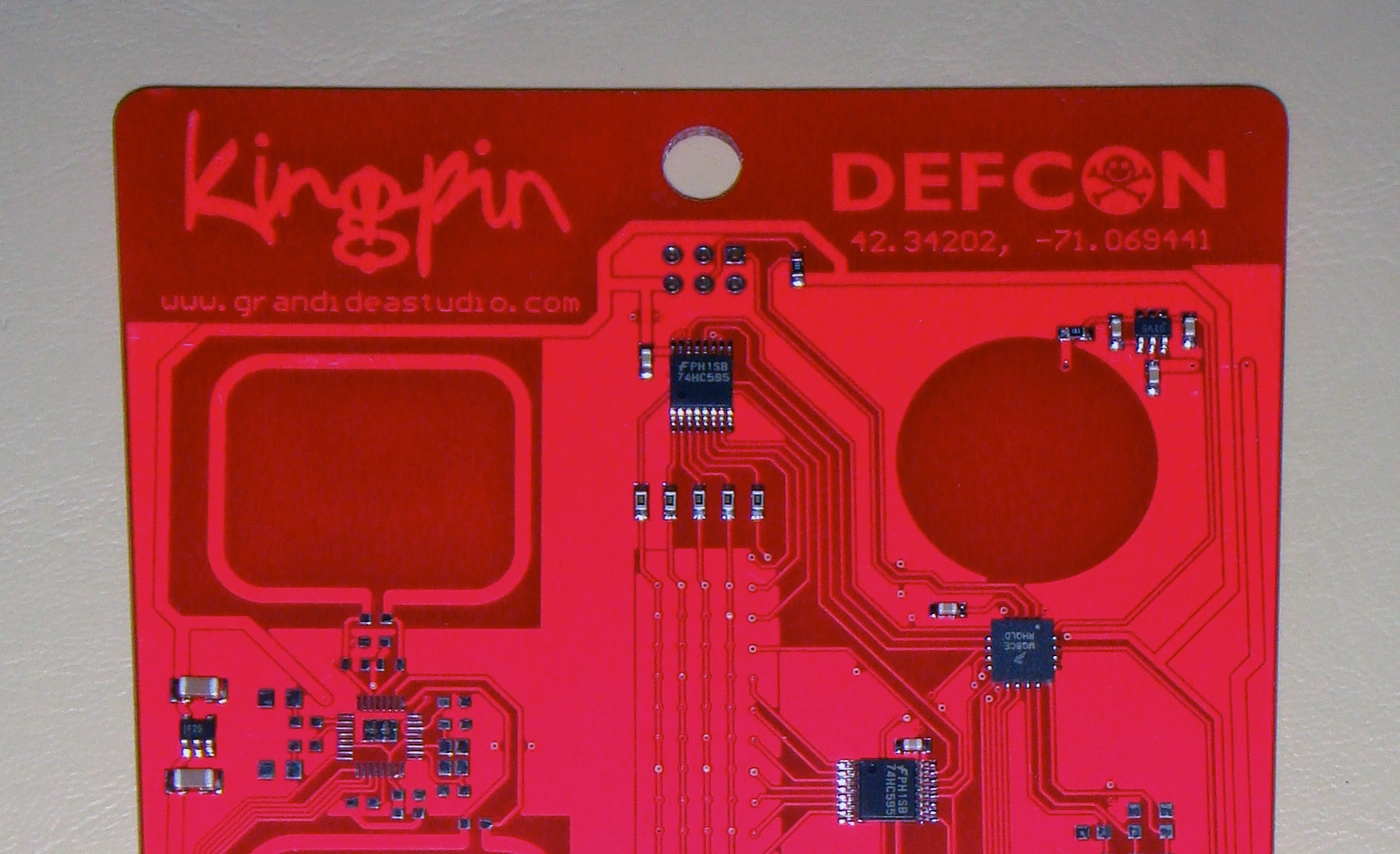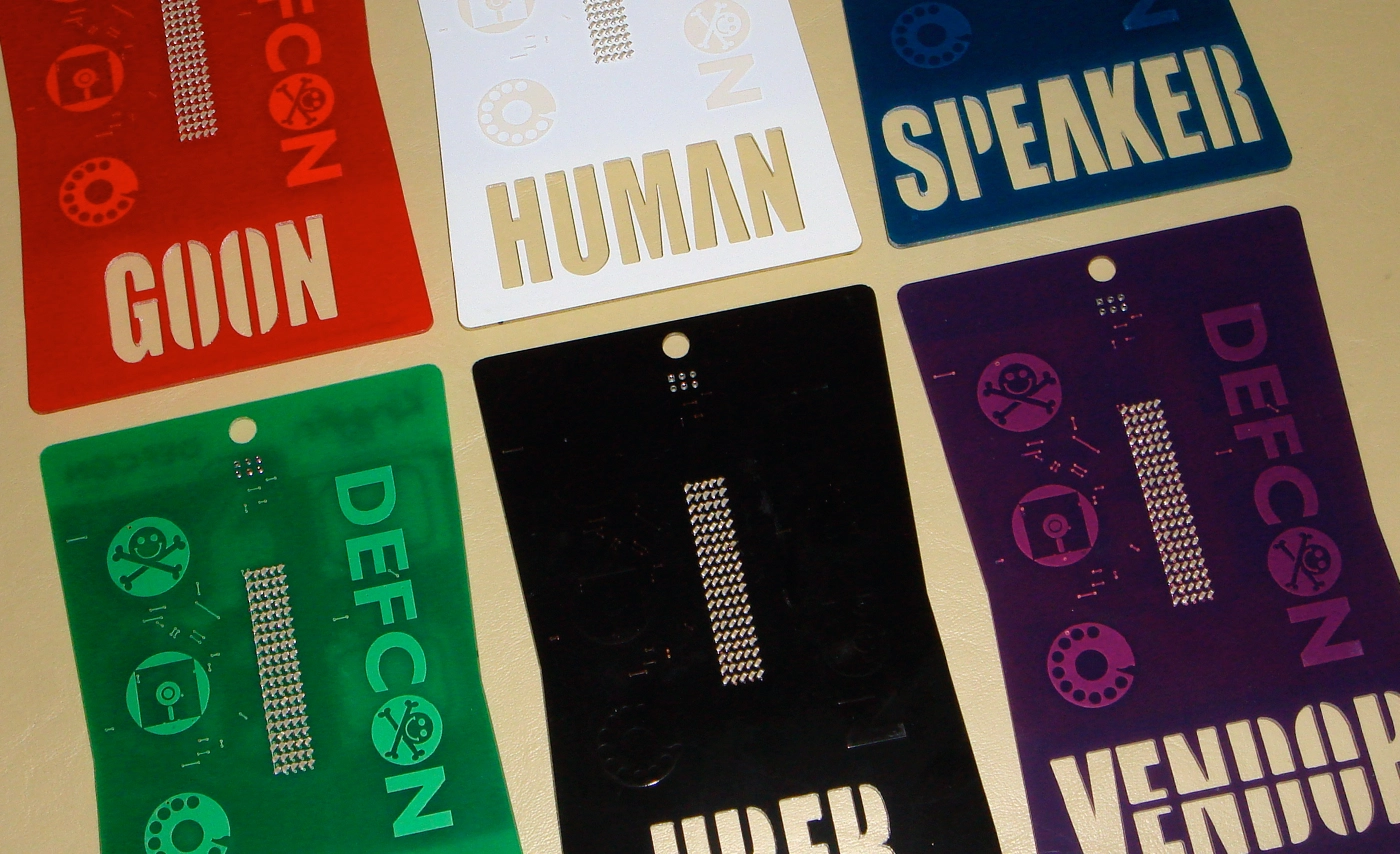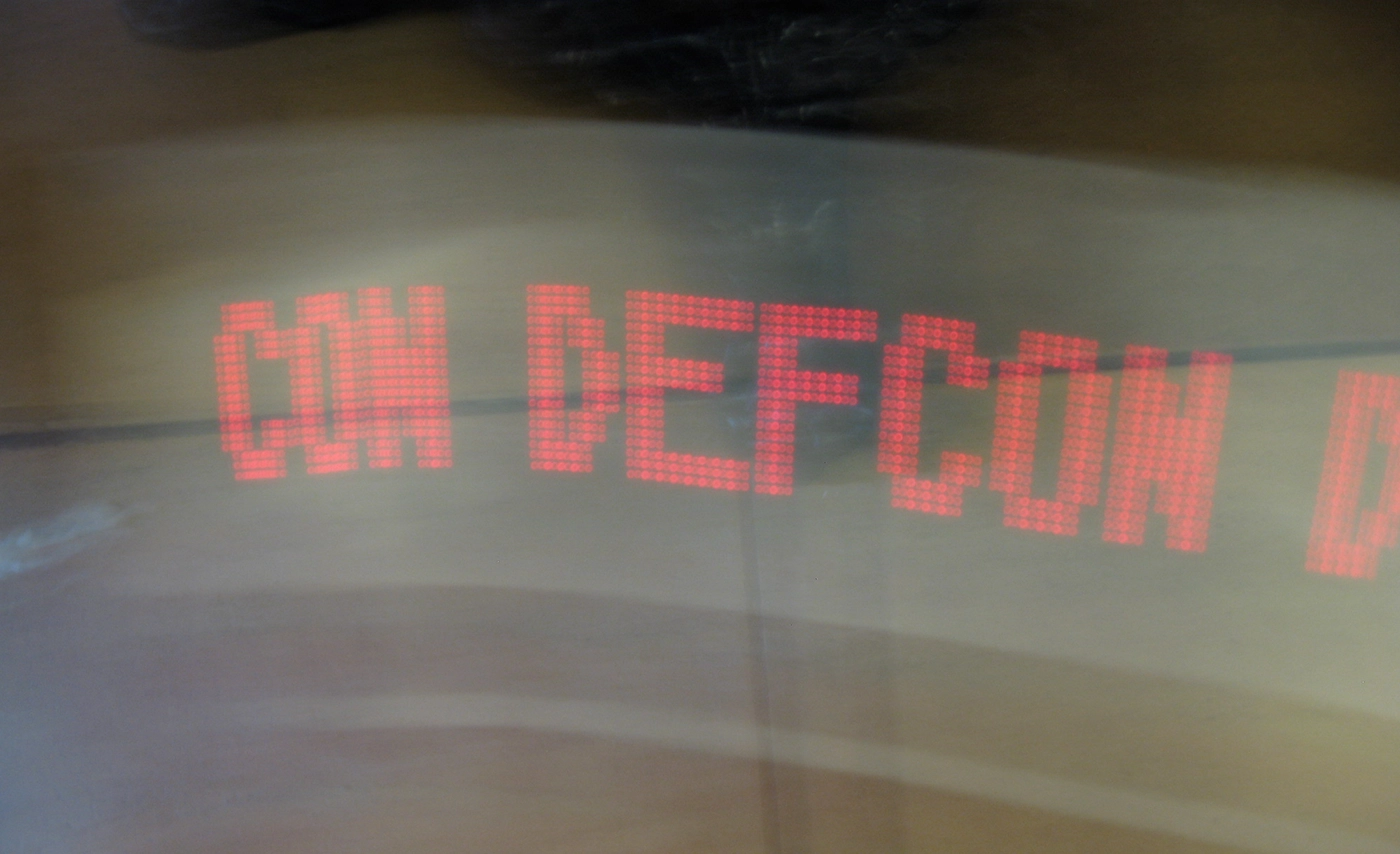DEFCON 15 Badge





The DEFCON 15 Badge was created for the 2007 edition of DEFCON, the largest and oldest continuously running hacker and computer security convention in the world. The badge uses active electronics and an artistically-designed circuit board, as opposed to the more common conference badge approach of plastic or paper, and provides intentionally “open” circuitry to allow attendees to experiment with and modify the badge to their liking.
The design is based around a Freescale MC9S08QG8 8-bit microcontroller and uses a matrix of 95 LEDs (5 columns by 19 rows) to display user-customizable, vertically-scrolling text messages. Source code was developed using the freely available Codewarrior Development Studio for HC(S)08. Optional circuitry (fully designed, but unpopulated on the badge circuit board) supports a Freescale MMA7260QT Triple-Axis Accelerometer for motion sensing applications and a Freescale MC13191FC 2.4GHz RF transceiver for 802.15.4 or ZigBee applications. Two CR2032 3V Lithium coin cell batteries provide the required power and two Quantum Research QT100 capacitive sensors are used as the user interface and to cycle through the five operating states of the badge:
- Text Message Display (Default = "I <heart> DEFCON 15")
- Text Message Entry
- Scroll Speed Selection
- Persistence-of-Vision (POV)
- Sleep
A total of 6,800 badges were manufactured and six different text cut-outs and soldermask colors were used to denote the different DEFCON clientele: Human, Goon, Press, Speaker, Vendor, Uber (awarded to the winning teams of official DEFCON contests).
Grand Idea Studio once again hosted the DEFCON Badge Hacking Contest to award the most ingenious, obscure, mischievous, or technologically astounding badge modification created during the weekend conference. There were seven official entries in this year's contest. Second place went to Team Slackers (Botten and Dov), who created a single sign-on generator which displayed the password on the badge and worked in conjunction with the Windows-based, open source pGina user authentication scheme.
The winning contest entry from Team Osogato (Len Sassaman, Meredith Patterson, Dustin Cooper, Martin Murray, Tongen, and Maxinux) was the only one that combined hardware and firmware modifications. The team hacked the badge into a line-level meter for under $10 in additional components that used the LED matrix to display the peak levels of an audio signal fed into one channel of the A/D. The two capacitive sensors are used to adjust the levels of the input signal and three shades of "greyscale" are used to create a fading effect on the display. For the icing on the cake, the team worked with The Brothers Grimm to create a rap song based on Joe Grand's Ode to the DEFCON Badge poem that appeared in the DEFCON program.
The DEFCON 15 Badge was chosen as a Top 10 finalist in Freescale Semiconductor's 2007 Black Widow $10,000 Design Challenge from a field of more than 775. Each submission was judged on creativity, design efficiency, technical complexity, and overall application innovation and usefulness.
Documentation:
- Schematic
- Bill-of-Materials
- Assembly Drawing
- Test Procedure and Video (YouTube)
- Source Code: Freescale MC9S08QG8 for CodeWarrior
- Slides: Making of the DEFCON 15 Badge
- Article: Making the DEFCON 15 Badge (Nuts & Volts Magazine, July 2008)
- Poem: Ode to the DEFCON Badge
- Song: Badgez (The Brothers Grimm)
- Pictures (Flickr)
- Video Samples (YouTube)
Selected Badge Hacking Contest Project Files:
- DEFCON 15 badge emulator SourceForge project and DefPong (Mike Schiraldi)
- Single sign-on implementation using pGina (Botten and Dov)
- Real-time clock and extra display modes (sunshine)
- Stacker amusement game port, increased message limit (225 characters), additional animations, and modified start-up and POV messages (Zoz)
- Accelerometer demonstrations (Dustin Cooper)